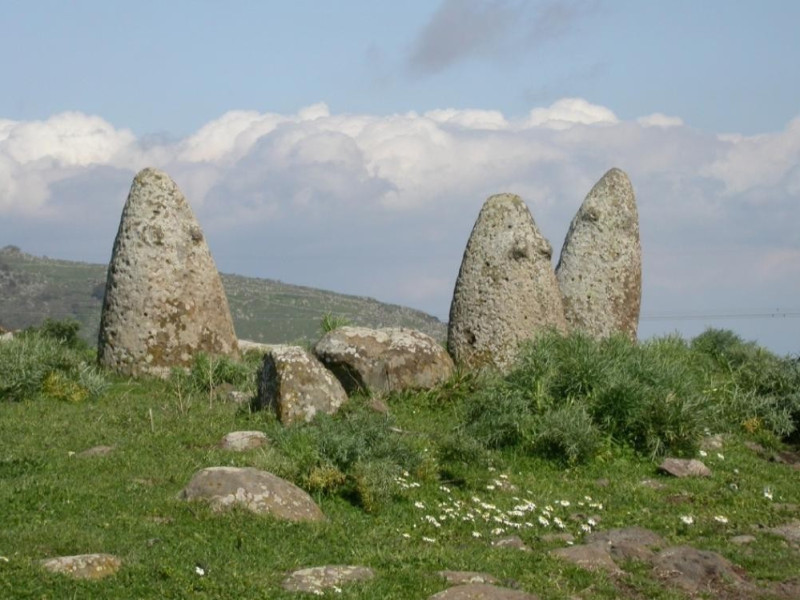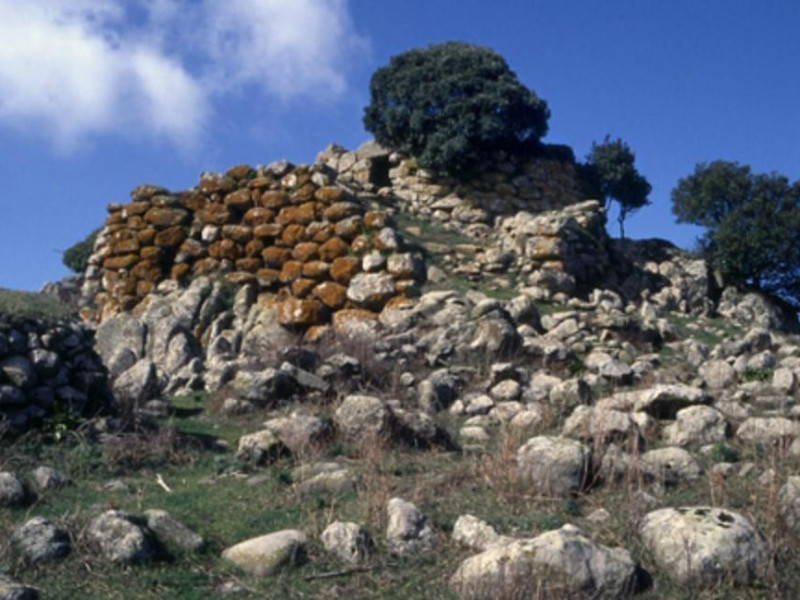Area Archeologica di Tamuli
The archaeological area of Tamuli, in central- north Sardinia in the Marghine region, is one of the most impressive Nuragic settlements in the island. It consists of three giants%u2019 graves, a nuraghe and a village, dating from the Middle and Late Bronze Age (16th-13th century BC). The most important is tomb I. Well- preserved, it is made of an intact large exedra, with the entrance to the burial chamber in the middle through a pierced trapezoidal slab. A bench with 27 blocks is along the exedra. Near the exedra and around the tomb, many variously shaped ashlars are still visible. Six cone- shaped baethyles are on the left side of the tomb. The three biggest baethyles represent female figures with breasts, while the others are completely smooth and symbolize the male phallus. These particular ogival- shaped stones have often a religious function: they represent divinities who give life and bring back to life. It is a complex nuraghe, with round central tower and a rampart with two towers (now destroyed). Nearby there are six intact oval- planned huts with flat roof slabs.
Partially accessible to disabled people.


